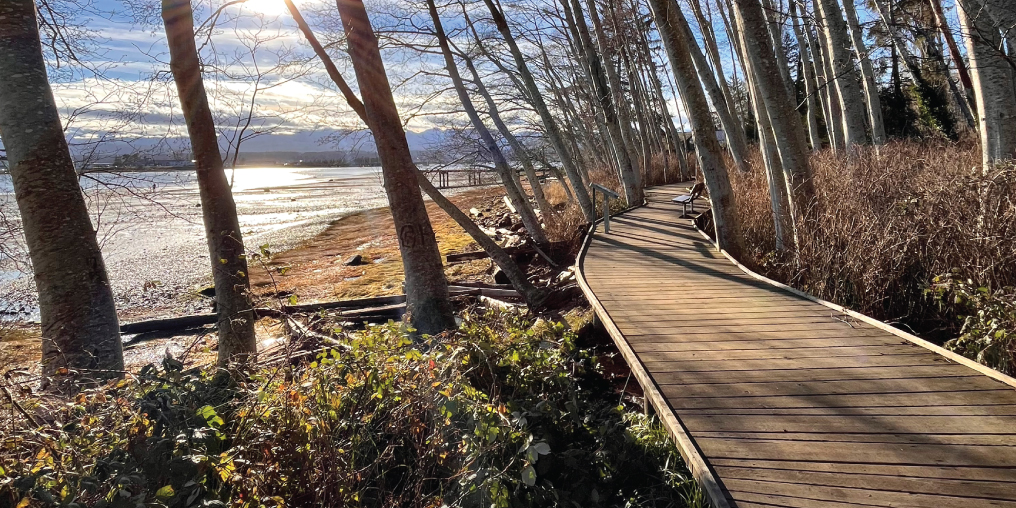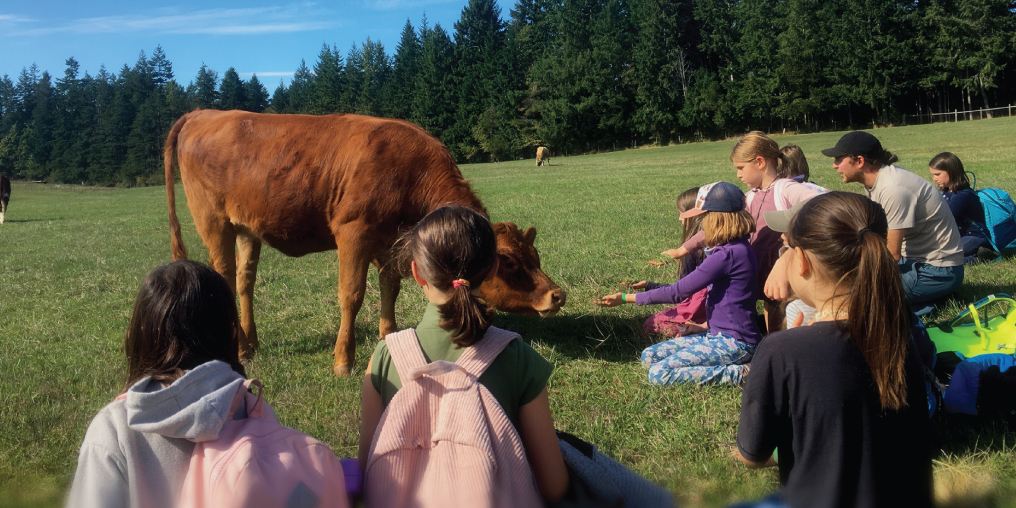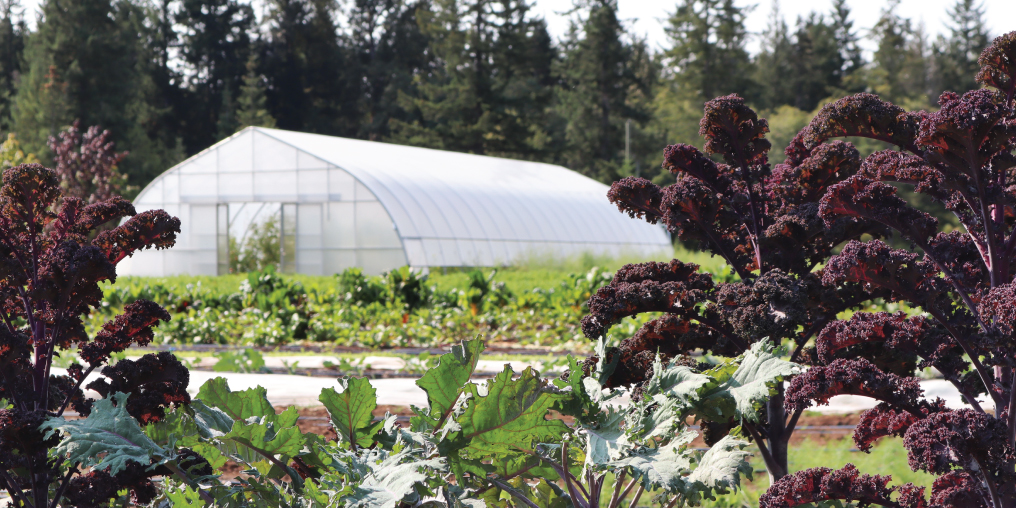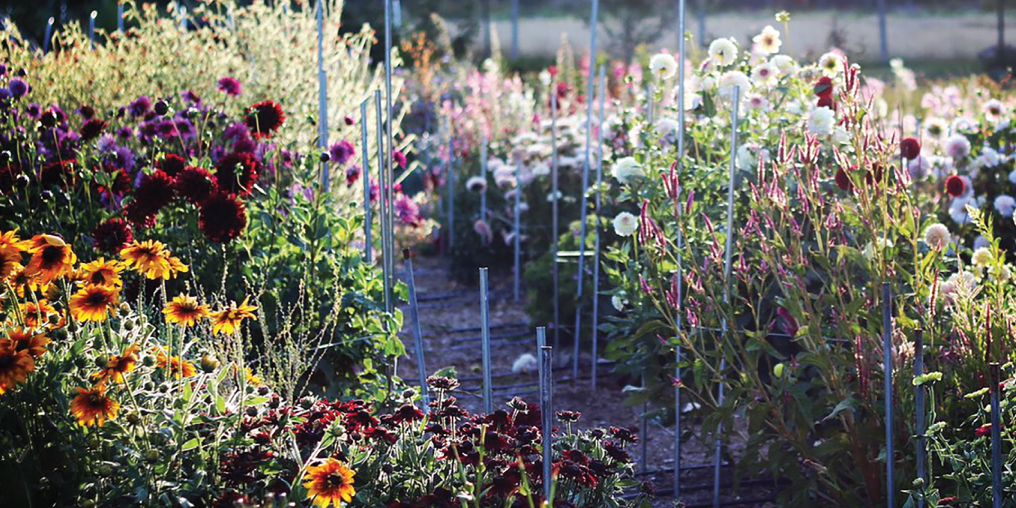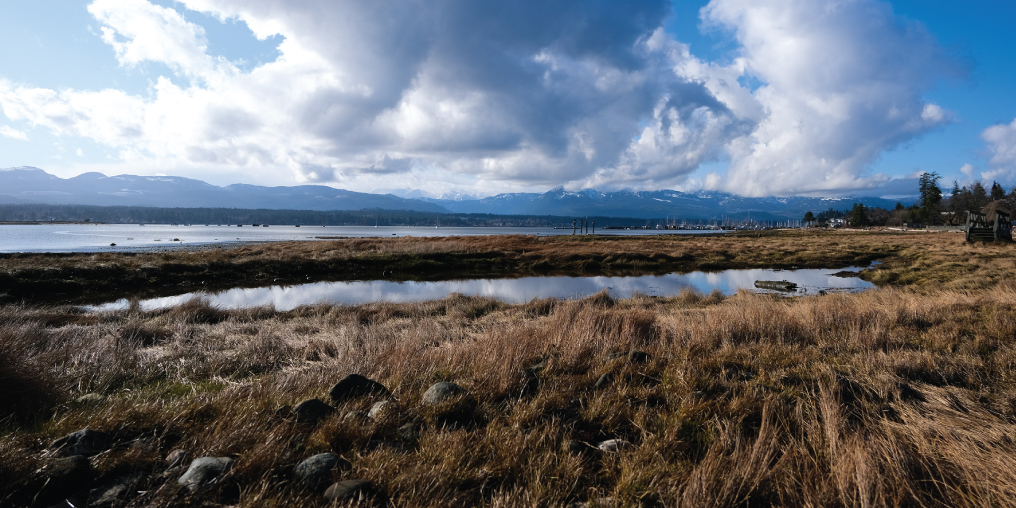Strolling through Macdonald Wood Park, with its giant trees and verdant flora within town boundaries, is one of Comox’s everyday extraordinary experiences. To find this nine-acre conservation area, meander eastward from downtown Comox along Balmoral Avenue until you reach the entrance on Croteau Road.
This rare, ancient forest and salt marsh ecosystem on the north shore of Comox Harbour was once threatened by development—until the collective voice rose up to fight for its preservation.
The park owes its existence to a dramatic David-vs-Goliath saga that began unfolding in 1993, when a Vancouver developer, Hugh Noort, purchased a parcel of land from the Macdonald family. Noort was pursuing the purchase of additional land from the adjacent neighbour; the developer planned to rezone the land and build a multi-family subdivision.
Behind the scenes, a growing coalition of concerned citizens began organizing for a different outcome altogether: the preservation of the area.
They quickly formed the Macdonald Wood Park Society (MWPS). Donations poured in, and, in May 1994, the society’s offer to purchase the neighbour’s land was accepted. This launched a heated controversy about the future of the land that polarized debate in the community for two years. The story includes a lawsuit, a referendum, complex negotiations, and even a brief blockade of the area by concerned citizens; a fascinating full record of the twists and turns can be found on the MWPS website.
Ultimately, those who sought to preserve the park triumphed through collaboration and creative fundraising (including the sale and consumption of thousands of burritos). Some impassioned citizens would eventually go so far as to take out additional mortgages on their homes to help pay off the purchase.
In 1996, MWPS, the Town of Comox, and the provincial Ministry of Environment, Land and Parks purchased the land. The developer walked away generously compensated and Macdonald Wood Park was established as a nature park in perpetuity.
The park is owned and maintained by the Town of Comox, and the MWPS is responsible for stewardship, including an annual invasive species pull each spring. (In recent years, the park has become plagued by invasive species such as English holly, English ivy, and Himalayan blackberry, all threatening to choke the natural flora if not properly managed.)
Signage at the park entrance outlines how we can continue to protect the delicate ecosystem, such as keeping to the well-established trails and off the understory on either side of the trails. There is clearly marked private property between Macdonald Wood Park and Mack Laing Nature Park; please respect the owners’ wishes and do not walk along their driveway. Use the official connecting trail instead. (This means beloved dogs, too.)
As it does in any forest, spending time here provides a sense of physical and mental well-being, health, and vitality. There’s also a sense of the passing of time: the understory adjacent to the established park reveals that this forest is continually evolving, as it has over millennia. For example, Douglas fir saplings will not grow in the shade of mature trees; however, others, like red cedar, grand fir, and hemlock will flourish. This forest has a long life ahead of it.
As you walk the trails down to the harbour, admire your surroundings and think about those who lived before you. Remember the power of the collective voice, and the importance of understanding what lies beneath our footfall.
Visit mwps.ca to learn more or support the park through membership, a donation, and/or volunteer work.
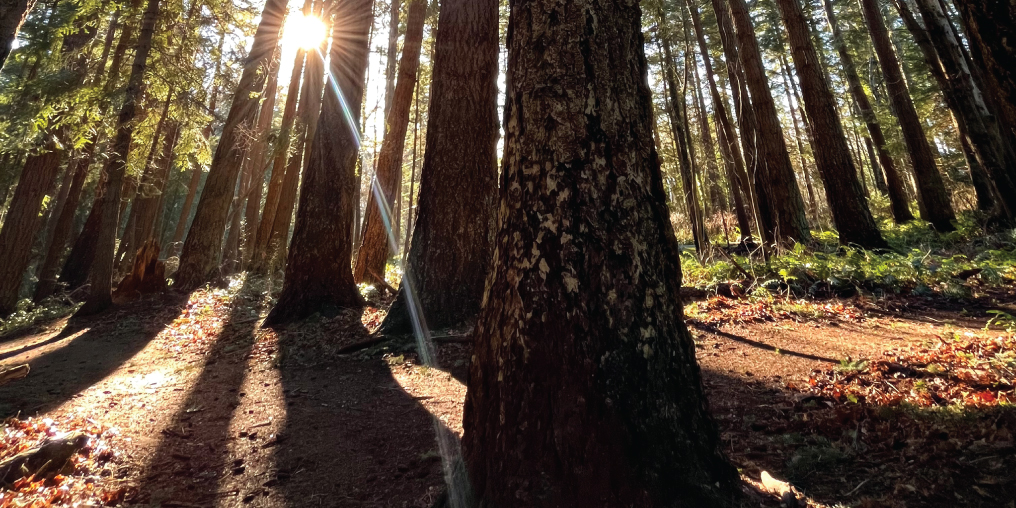
WHAT MAKES THE PARK SPECIAL?
From the acrimonious seeds of opposing views grew a deeper understanding of the wooded park, its archaeological significance, and the importance of protecting its sensitive ecosystem that—once destroyed—would be lost forever.
Archaeological research revealed an enormous midden in the area, a rich record of centuries of use by the Pentlatch (Puntledge) and K’omoks First Nation peoples. Middens are composed of layers of discarded remains of human activities that happened over hundreds to thousands of years, such as mollusc shells, animal bones, and human waste; they offer a valuable physical link to the past. A 1993 archaeological impact assessment confirmed that the midden was largely intact throughout the property, and it remains so to this day.
The area is ecologically sensitive: between the midden and the foreshore are the last intact remains of the salt marsh that, at one time, extended around the entire Comox estuary. Supporting a wide range of plant, bird, and animal wildlife, salt marshes create a living dike that helps combat the effects of rising sea levels secondary to climate change.
The northern tip of the park is a second-growth mixed forest. Here, broadleaf maple, western hemlock, Sitka spruce, red cedar, alder, and grand fir intermingle with Douglas firs that escaped the selective logging that took place in the 1940s. In the understory you can find species like trillium, Oregon grape, snowberry, thimbleberry, red huckleberry, sword ferns, wild rosehips, and sedge, to name a few.

